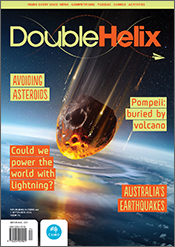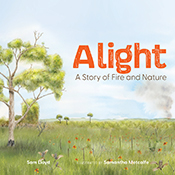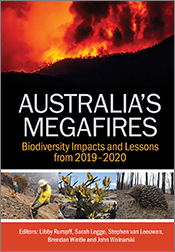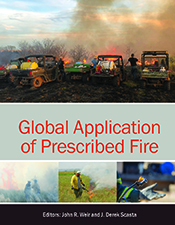Culture, Ecology and Economy of Fire Management in North Australian Savannas
Rekindling the Wurrk Tradition
Edited by: Jeremy Russell-Smith, Peter Whitehead, Peter CookeDeals with the management of fire in one of the world’s most flammable landscapes: Australia’s tropical savannas.
This engaging volume explores the management of fire in one of the world’s most flammable landscapes: Australia’s tropical savannas, where on average 18% of the landscape is burned annually. Impacts have been particularly severe in the Arnhem Land Plateau, a centre of plant and animal diversity on Indigenous land. + Full description
Culture, Ecology and Economy of Fire Management in North Australian Savannas documents a remarkable collaboration between Arnhem Land’s traditional landowners and the scientific community to arrest a potentially catastrophic fire-driven decline in the natural and cultural assets of the region – not by excluding fire, but by using it better through restoration of Indigenous control over burning.
This multi-disciplinary treatment encompasses the history of fire use in the savannas, the post-settlement changes that altered fire patterns, the personal histories of a small number of people who lived most of their lives on the plateau and, critically, their deep knowledge of fire and how to apply it to care for country. Uniquely, it shows how such knowledge and commitment can be deployed in conjunction with rigorous formal scientific analysis, advanced technology, new cross-cultural institutions and the emerging carbon economy to build partnerships for controlling fire at scales that were, until this demonstration, thought beyond effective intervention.
- Short descriptionNews
No longer available in a print edition.
Reviews
"When you take into account its multidisciplinary nature, almost no-one who reads it will be at home with every paper contained within. By the same token, however, there is something in it for everyone, and everyone will learn something new.
In detailing the work of scientists and Traditional Owners, this book will be an invaluable resource for exploring similar issues and establishing similar programmes in fire-prone savannas elsewhere. I highly recommend it to those who are working in similar cultural and ecological landscapes."
Helena Mills, Ecological Management & Restoration Vol 13, No 1 January 2012
"One of the book’s main strengths is to integrate the social, political, and economic issues around indigenous fire management with high-quality science on the biodiversity implication of different fire regimes in Northern Territory savannas… the book represents an important contribution to the global debate on carbon markets, and provides an inspiring example of how to go about mobilising different sectors of society to achieve a common goal."
Sally Archibald, African Journal of Range & Forage Science 2011, Vol. 28(1), pp.47-49
"NAILSMA supports this valuable resource and encourages any one interested in cultural and natural resource management, new economies and north Australian development to purchase a copy…"
NAILSMA, North Australian Indigenous Land and Sea Management Alliance
"It is remarkably wide-ranging and seeks to document the basis for an alternative, more appropriate, approach to Australian savannah fire management. Their imaginative proposals for simultaneously addressing environmental challenges and social and economic development are just what are needed in the 21st century. I would recommend this book to anyone who is serious about learning how to work across traditional divides in the interests of improved ecosystem management."
Brian W van Wilgen, South African Journal of Science, Vol 106, No 5/6, 2010
Details
ePDF | October 2009ISBN: 9780643098299
Publisher: CSIRO Publishing
Available from eRetailers
ePUB | October 2009
ISBN: 9780643099999
Publisher: CSIRO Publishing
Available from eRetailers
Features
In twelve multi-authored chapters, the book documents key challenges and novel options for addressing chronic landscape-scale fire management issues in north Australian savannas through development of:- collaborative, cross-cultural "two toolkit" approaches
- commercially supported environmental services programs
Contents
View the table of contents.Authors
Jeremy Russell-Smith is a consultant ecologist with 25 years’ experience in northern Australia. He coordinates fire research programs for the Tropical Savannas CRC and works on other natural resource management projects in South-East Asia. He has an abiding interest in the ecology, biogeography and management of monsoon rainforests and sandstone heaths. He often works with Indigenous people on landscape and resource management issues.Peter Whitehead is a senior project officer with the Northern Territory Government, working in policy in natural resource management. He has more than 25 years’ experience in research on the ecology of wetland fauna, management of exploited wildlife and the role of Indigenous people in natural resource management, including fire management.
Peter Cooke has worked in the Northern Territory as forester, journalist, program manager with the Northern Land Council and a number of other roles. He presently works as Chief Executive Officer of Wardekken Land Management Limited, an Indigenous corporation that plays a major role in management of the Arnhem Land escarpment.








